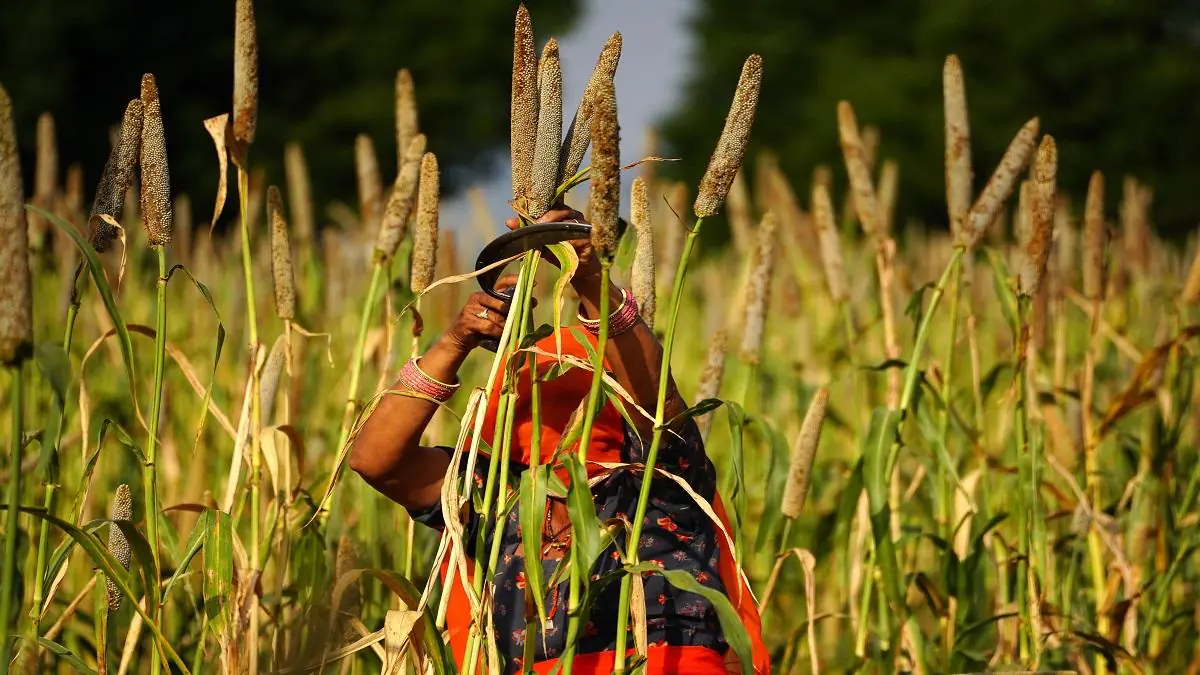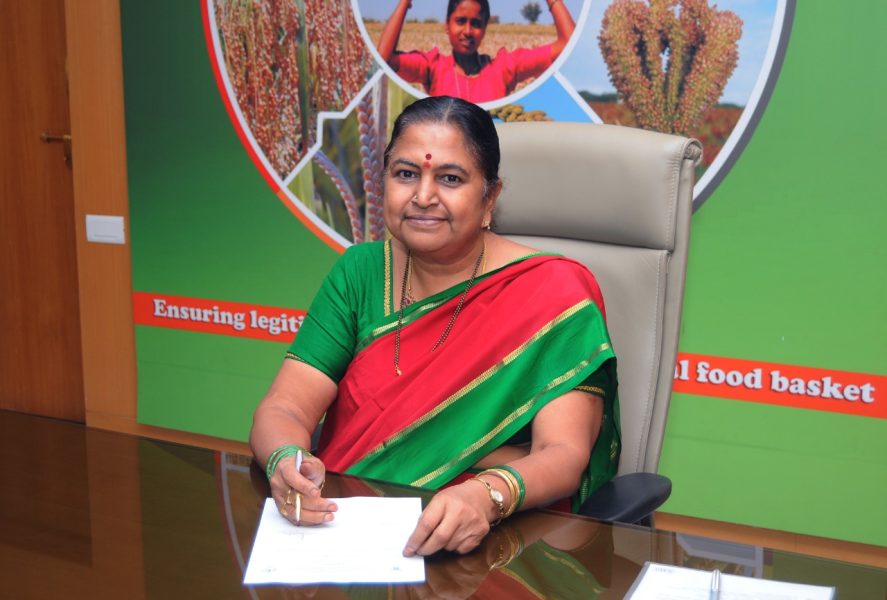
Palatability, shelf life key factors in boosting millet consumption: Scientist
Blended flours, ready-to-eat millet foods will expand market for the coarse cereals, says CV Ratnavathi, former director of Indian Institute of Millet Research

The replacement of staples like wheat and rice with millets will take time and their expansion into non-traditional areas will be driven by breakfast snacks like poha and flour or batter blends, CV Ratnavathi, former director of the Indian Institute of Millet Research (IIMR), Hyderabad, told The Federal in a video interview.
While the production of nutri-cereals, as coarse grains like millets are known, has doubled since the 1960s despite a halving of area due to yield improvements, the per-person availability has fallen as supply has not kept pace with the increase in population.
India among the largest producers
But concerted attempts made by the Central and state governments to raise production, create awareness about the health benefits of millets and an image makeover would increase demand for them, provided there are improvements in palatability and shelf life, said Ratnavathi, who was acting director of the IIMR till February 15.
Also read: Scientists working to increase shelf life of millets-based products, validate health benefits
In her Budget speech earlier this month, Finance Minister Nirmala Sitharaman said the production and consumption of millets would be promoted. IIMR, which is a centre of excellence in the field, will be made a global hub for sharing of research, technologies and best practices, she said. In the Budget, though, no allocation has been made for the institute.

India is among the largest producers of millets. About 40 per cent of the global output of millets other than sorghum or jowar is produced in India and 44 per cent is produced in Africa, NITI Aayog member Ramesh Chand wrote in a recent newspaper article.
2023: International Year of Millets
The United Nations has declared 2023 as the International Year of Millets to create awareness about their health benefits and their role in preventing or managing lifestyle diseases like diabetes. Though millets have carbohydrates, unlike wheat and rice, they release these slowly because of high fibre. They also have nutrients like protein, calcium, zinc, iron and magnesium. But they are hard to eat and one has to acquire a taste for them. States like Karnataka have attempted an image makeover by marketing them as Siridanya or rich grains. FM Sitharaman preferred to call them Shree Anna in her budget speech. A former chief economic adviser called them ‘socially-useful crops’ in a previous edition of the Economic Survey as they are hardy, grow in dryland areas and use less water.

Ratnavathi said IIMR had developed many millet-based products like biscuits, cookies, pastas and noodles. Poha made of jowar was a “hit,” she said. Some food companies were blending wheat flour with that of millet flour. They were also selling blended dosa batter.
The millet missions
The institute as well as state agricultural universities have been trying to raise production by releasing high-yielding varieties and hybrids. This has resulted in the yield of coarse cereals rising from 577 kg a hectare in the late 1960s to 2,027 kg now. Seed hubs have been developed to increase the production of quality seeds. Farmer producer organisations have been enlisted to grow millets and encourage primary processing like cleaning and removal of foreign matter.
Also read: Mann Ki Baat: Modi touches on tribals, traditional music, millets
Many states had launched millet missions. They were procuring them at minimum support prices or giving cash incentives, Ratnavathi said. The Centre has a production-linked incentive scheme for millet-based products. Large companies with annual turnover of over Rs 250 crore and small enterprises with annual revenue of Rs 2 crore or more could apply for an incentive of 10 percent (tapering to 8 per cent over five years) of their sales revenue from breakfast cereals and ready to cook or eat items with millet content of 15 per cent or more.
The demand displacement
Though the production has doubled, there has been a demand displacement, as NITI Aayog member Ramesh Chand has underlined. As per the National Sample Survey of 1993-94, the lowest 25 percent of households consumed 1.59 kg of coarse cereals per month. But the last household consumer expenditure survey of 2011-12 showed their consumption in this segment had fallen to 270 grams per month.
Ratnavathi attributed this to the availability of fine cereals like wheat and rice at very low rates in the Public Distribution System. Under the National Food Security Act, 75 percent of the poorest rural households and 50 percent of the poorest urban households are entitled to 5 kg of rice, wheat or coarse cereals per month per person at Rs 3, 2 and 1, respectively. From January 1, the government has made this entitlement free. In her Budget speech, Sitharaman highlighted that under the Pradhan Mantri Garib Kalyan Anna Yojana (PMGKAY), the Centre will supply free food grain to all Antyodaya and priority households for the next year, beginning January 1, 2023.


